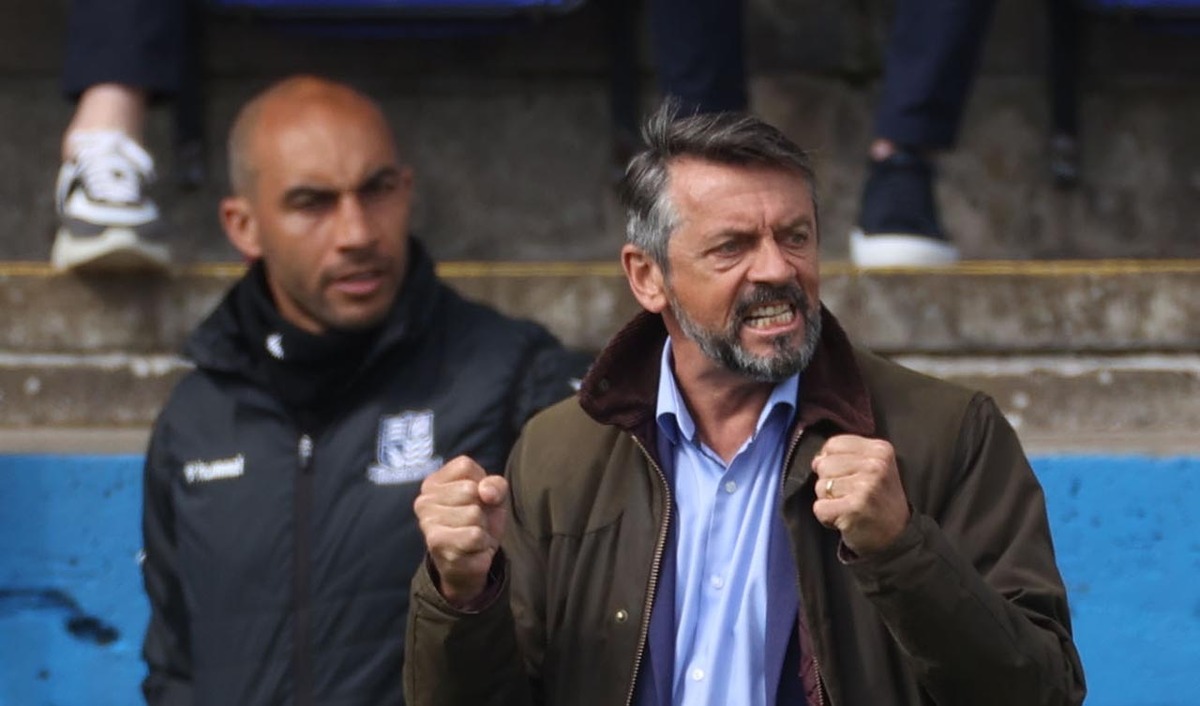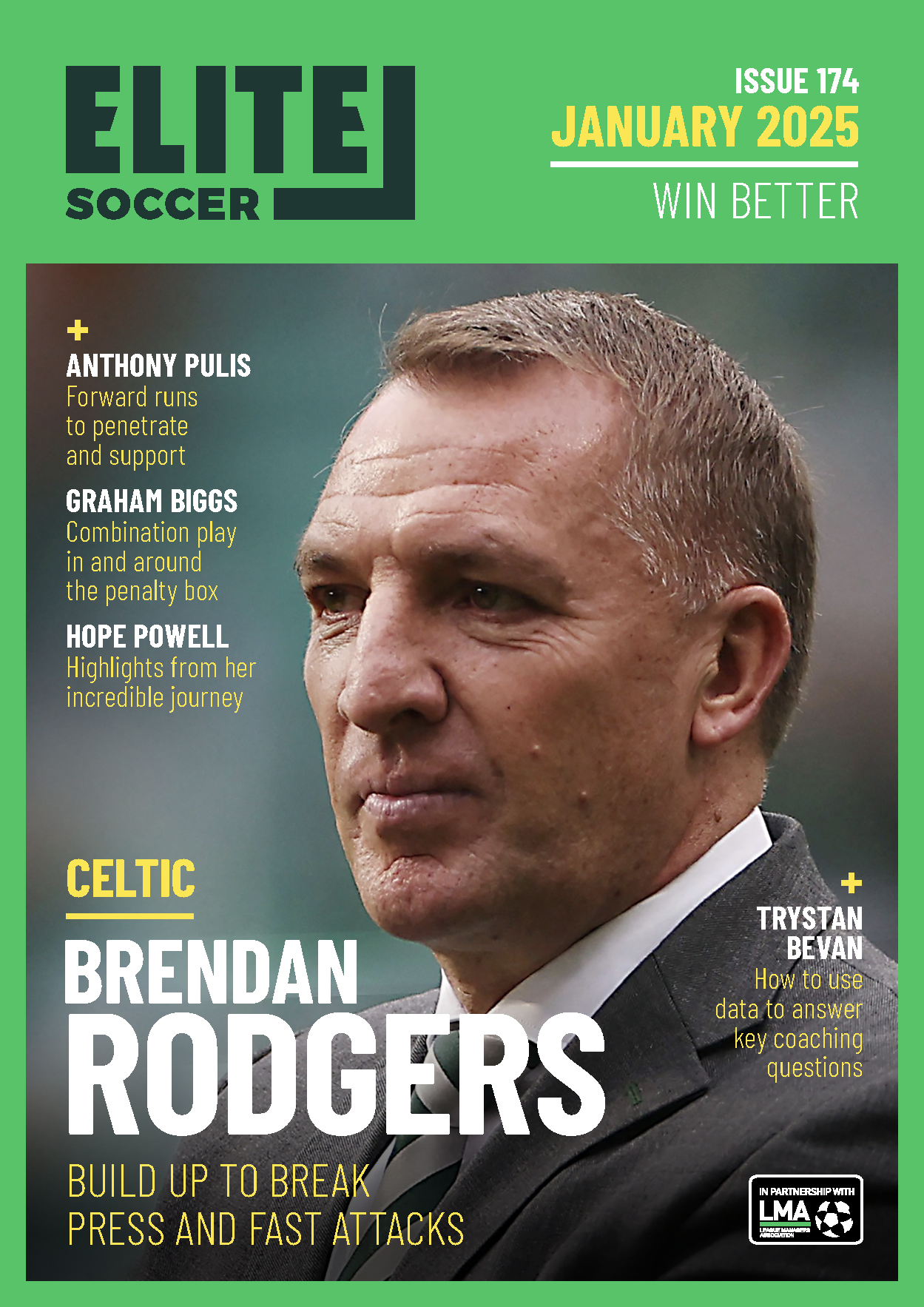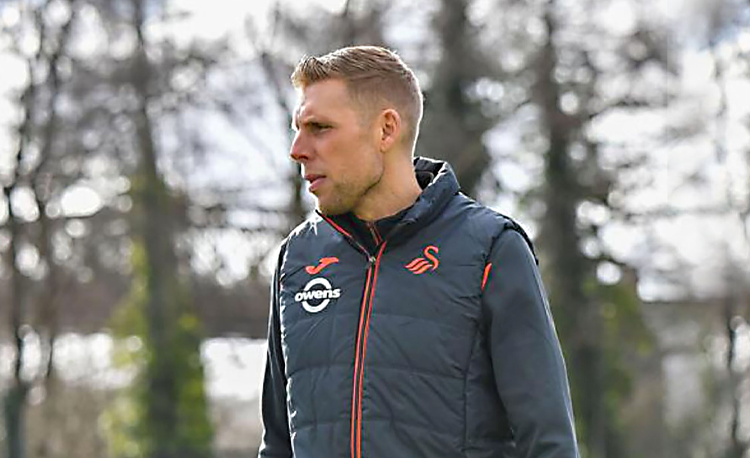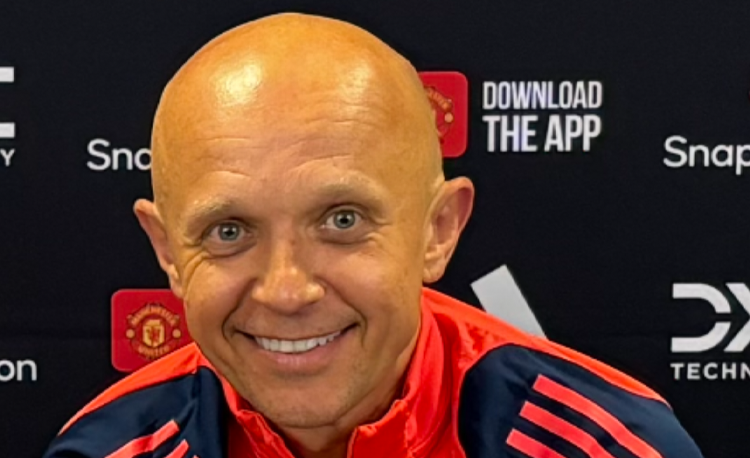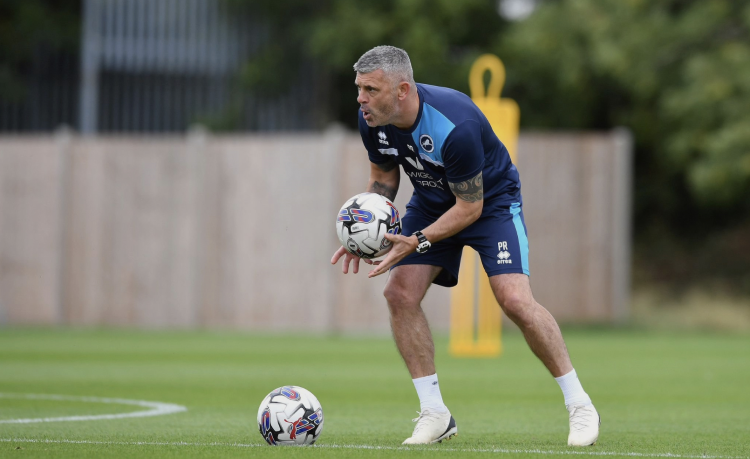You are viewing 1 of your 1 free articles
Finishing with realism
| Area | Final third of pitch |
| Equipment | Balls, bibs, cones, 1 mannequin, 1 full size goal |
| No. of Players | At least 3 players + 1 goalkeeper |
| Session Time | Finishing practice: 15mins Small sided game: 10mins |
This is a shooting and crossing session for a front three, generating shots from the edge of the penalty box, just inside the box and from crosses. It tries to create realism and makes the players think about their next actions.
I like this session because the players need to work hard and have to be switched on ready for a shot, or ready for the next stage of the practice. It should be performed at a realistic match tempo or as close to match tempo as possible.
This session could run once a week, however I think it has more impact when we run it every other week. We would use it in a session when the units are split and when attacking players are away from the defensive units.
It’s a technical session so hitting the target is the most important aspect, however running it at match tempo does bring a physical element into play.
“I like this session because the players need to work hard and have to be switched on ready for a shot”
FINISHING PRACTICE
We set up on the final third of the pitch, with a goal and a goalkeeper at one end and three cones positioned outside the penalty area as shown. A mannequin is positioned centrally on the edge
of the penalty area to represent a defender.
This session can be for as few as three shooting players plus one goalkeeper, or a larger group of players split into three groups with players taking turns to rotate in.
To start the session, the blue player at cone 1 plays a one-two with the red player on cone 2 and takes a shot at goal, as shown [1a]. The blue player then returns to cone 1 with a ball at his feet ready for his next action.
“This session can be for as few as three shooting players plus one goalkeeper, or a larger group of players split into three groups”
[1a]
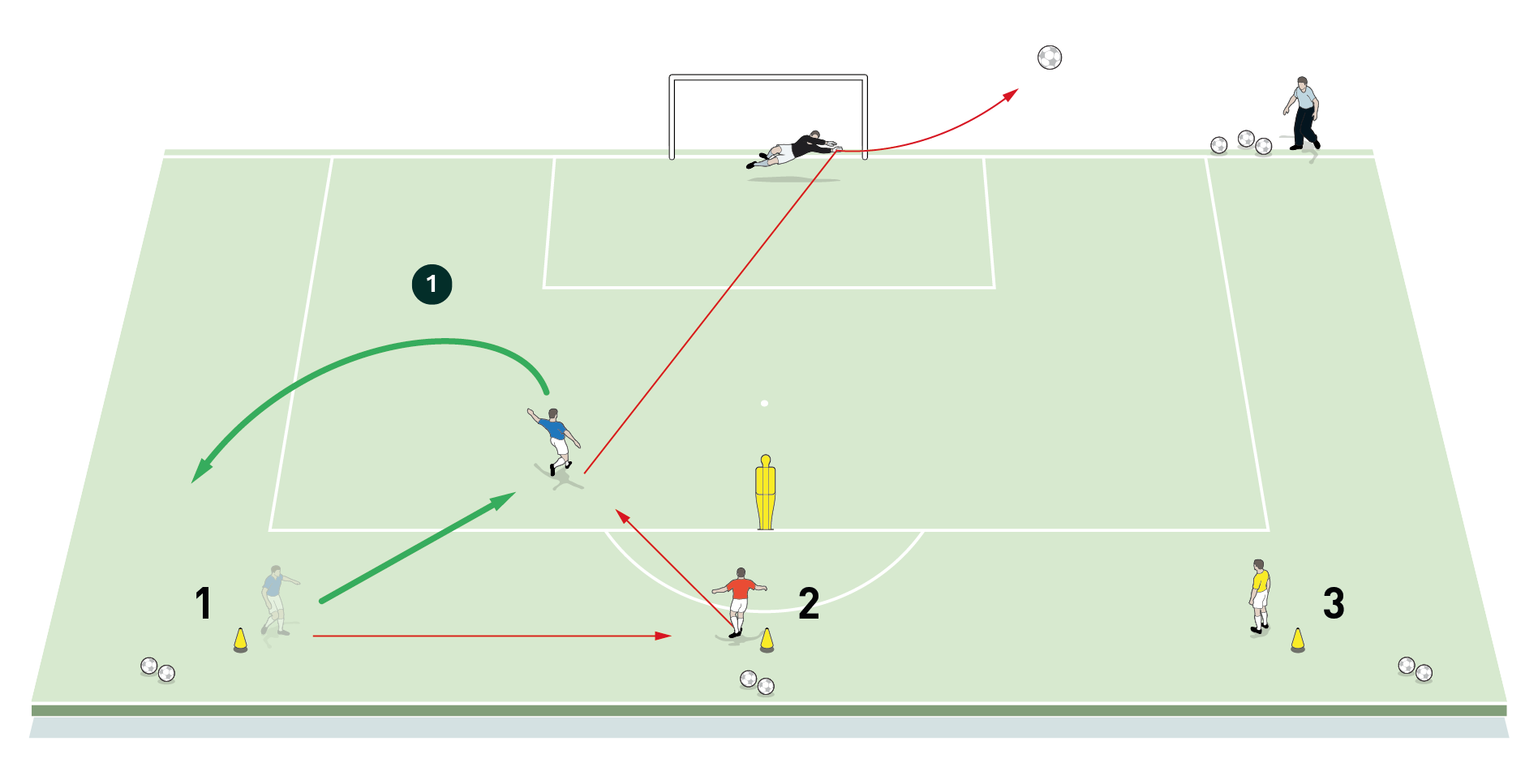
[1b]
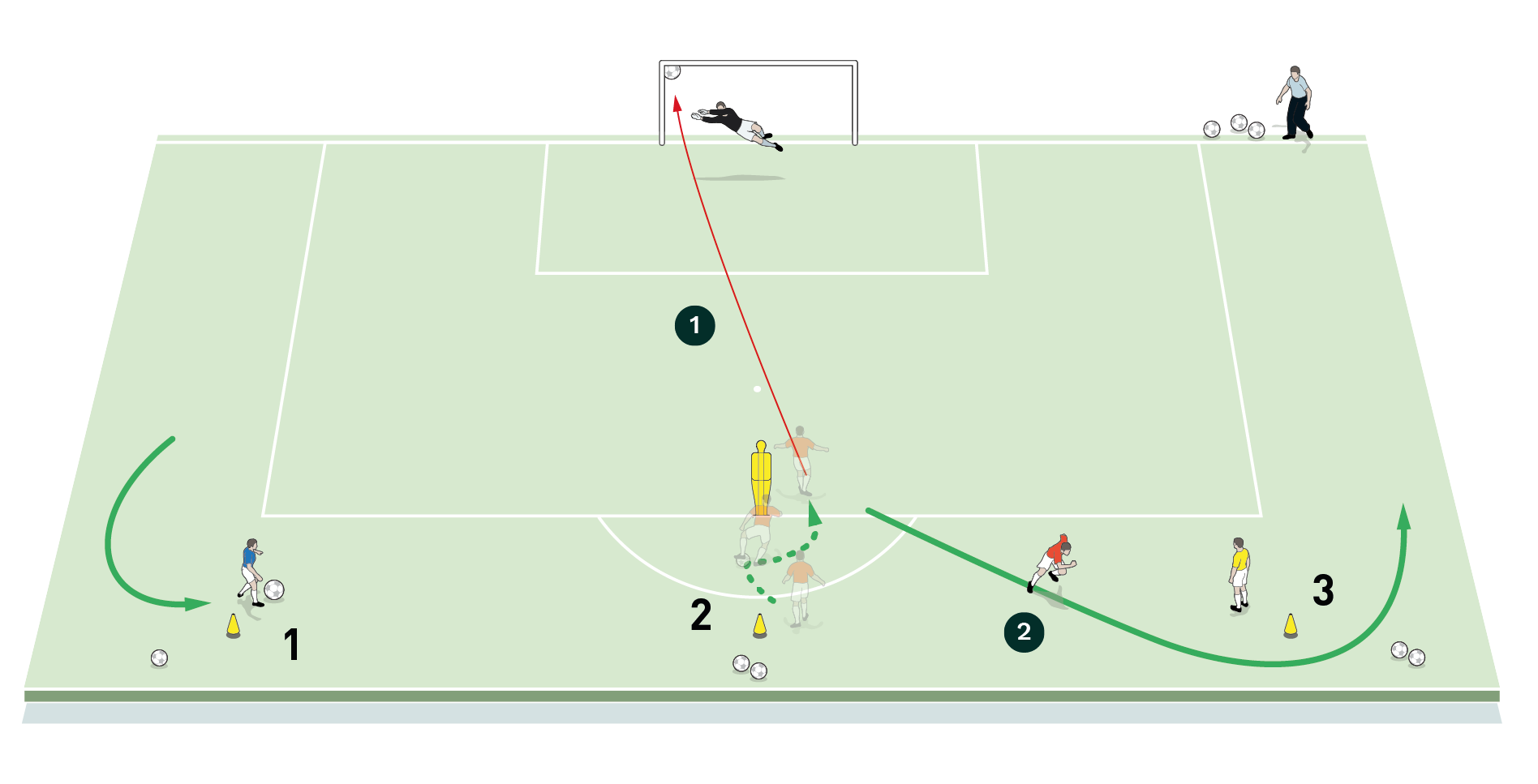
2. After the red player has had his shot, he runs around cone 3 and sprints to the byline ready to collect another ball
“We want to see the players aware of the realism of the situation and playing with match day intensity”
[1c]
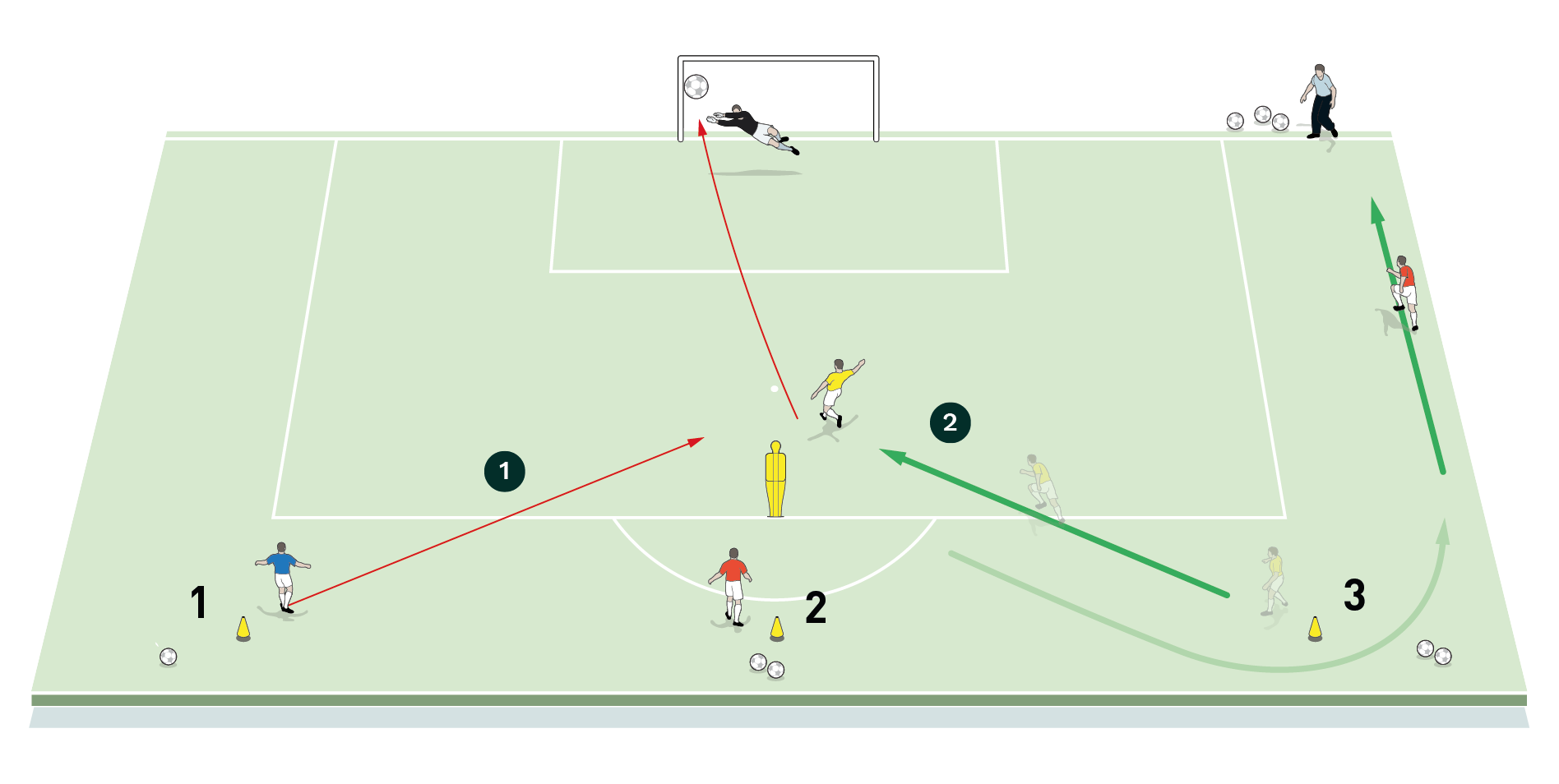
2. The yellow player at cone 3 runs diagonally to the mannequin and meets the pass with a first time shot. He should look to hit the corner of the goal
As soon as the first ball is dead, the red player at cone 2 has three touches to beat the mannequin and finish with a right footed shot, as shown [1b]. After the red player has had his shot he quickly runs around cone 3 and sprints to the byline to collect another ball passed in by the coach. While he is doing this, the yellow player at cone 3 runs diagonally to the mannequin, dropping a shoulder and meeting a pass rolled into the penalty spot from the blue player on cone 1. The yellow player shoots first time from just inside the penalty area. He should look to hit the corner of the goal, as shown [1c].
Meanwhile, at the end of his run around cone 3, the red player has received a ball from the coach on the byline and crosses into the goalmouth, where the yellow player has made a back post run and the blue player has made a run to the near post, as shown [1d].
After one of them finishes on goal and the ball is dead, the blue player moves to cone 2, the red player moves to cone 3 and the yellow layer moves to cone 1. The series of attacks is then repeated.
After a time limit or a specified number of cycles, the drill should be repeated, this time starting on the opposite side of the pitch.
We would usually play four blocks of three minutes, with one minute’s rest between.
[1d]
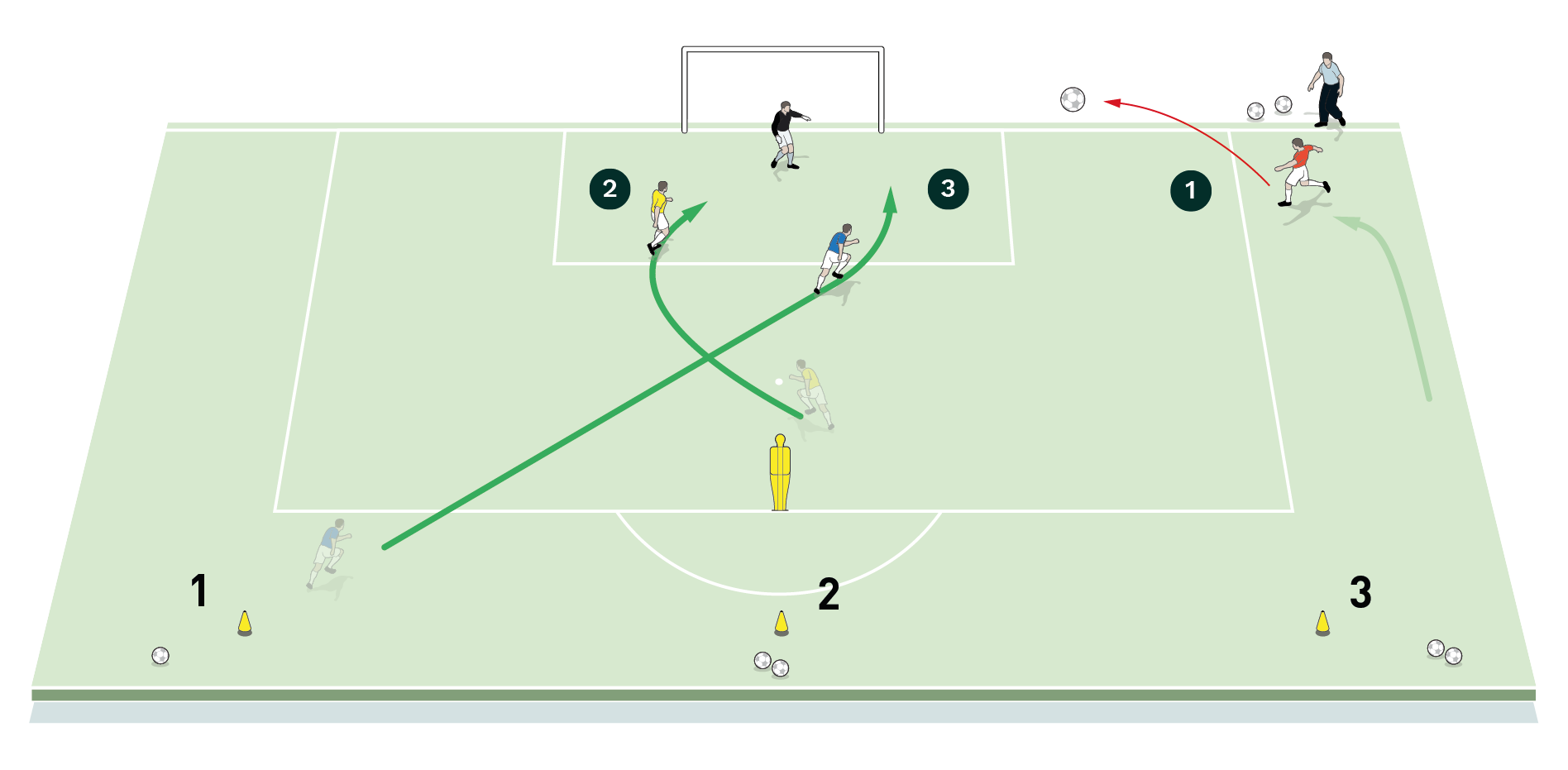
2. The yellow player makes a back post run
3. The blue player has made a run to the near post
COACHING POINTS
How do I progress the session?
We can progress this activity by asking the red player starting on cone 2 to produce a different type of cross at the end of his run to the byline. Can he chip the ball to the back post, or as we call it, can he “stand it up”? Can he try a curled cross or a cross made closer to his strikers?
We could also progress the activity by asking the red player on cone 2 to set the blue player for a volley or a half volley for the first shot.
What are the key things to look for?
Technically, we are looking for players to hit the target, find the corners, adopt the correct body shape when finishing, and hit the ball with as clean a contact as possible.
Tactically, we want to see the players aware of the realism of the situation and playing with a match day intensity. To do this, they should be fully aware and switched on all the time.
What are the typical mistakes players might make and how do I avoid them?
Sometimes players have a tendency to switch off after their shot and are not ready for the next pass, shot or cross. Make sure they play with the intensity of a match day to make the finishing as realistic as possible.
How would I put this in a game situation?
We would take this into a 6v6 small sided game [not shown] on a playing area the size of two penalty boxes with a goal and a goalkeeper at each end. We would ask the players to recreate the same movements when linking up in front of goal.
While we don’t have to finish the session with the small sided game, we feel that some players need to see the realism in what they have been working on. We would play four games of two minutes.
Related Files
Editor's Picks
Using the goalkeeper in build-up play
Pressing principles
Intensive boxes drill with goals
Penetrating the final third
Creating and finishing
My philosophy
Pressing initiation
Compact team movement
Defensive organisation
Coaches' Testimonials

Alan Pardew

Arsène Wenger

Brendan Rodgers

Carlos Carvalhal

José Mourinho

Jürgen Klopp

Pep Guardiola

Roy Hodgson

Sir Alex Ferguson

Steven Gerrard
Related
Coaches' Testimonials

Gerald Kearney, Downtown Las Vegas Soccer Club

Paul Butler, Florida, USA

Rick Shields, Springboro, USA

Tony Green, Pierrefonds Titans, Quebec, Canada
Join the world's leading coaches and managers and discover for yourself one of the best kept secrets in coaching. No other training tool on the planet is written or read by the calibre of names you’ll find in Elite Soccer.
In a recent survey 92% of subscribers said Elite Soccer makes them more confident, 89% said it makes them a more effective coach and 91% said it makes them more inspired.
Get Monthly Inspiration
All the latest techniques and approaches
Since 2010 Elite Soccer has given subscribers exclusive insight into the training ground practices of the world’s best coaches. Published in partnership with the League Managers Association we have unparalleled access to the leading lights in the English leagues, as well as a host of international managers.
Elite Soccer exclusively features sessions written by the coaches themselves. There are no observed sessions and no sessions “in the style of”, just first-hand advice delivered direct to you from the coach.
